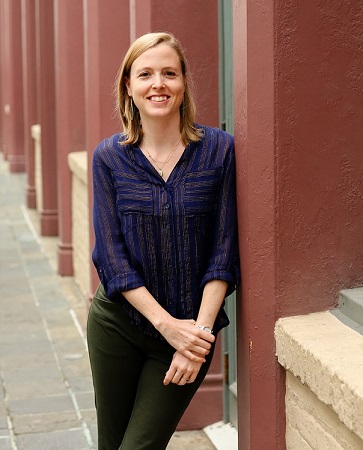First blog from the new SECAS Coordinator

This is my first blog of what is sure to be many as the incoming SECAS Coordinator. I am excited to join a team of incredibly talented and smart conservation professionals, and to serve the partnership of 15 states and 2 territories as we continue to build on the previous decade of landscape-scale conservation successes. I am looking forward to applying my experience with multi-stakeholder, landscape-scale conservation planning and implementation efforts among over 30 partners from Alaska and Northwest Canada, including federal agencies, four states/provinces, Indigenous communities, research institutions and non-governmental organizations. I have also worked with over a dozen states and 19 countries to help organizations, communities, and governments better understand, manage, and adapt to social and ecological changes. Most recently, I have been coordinating the Strategic Conservation Assessment of Gulf Coast Landscapes from my home base in New Orleans, Louisiana.
I have been familiar with SECAS and the Blueprint since around 2012, when the effort was first starting to get off the ground. I watched as partners from the South Atlantic Landscape Conservation Cooperative gathered around large tables with maps to collectively identify areas of importance with Sharpies and Magic Markers. From a simple beginning, the Blueprint has grown to encompass the entire Southeast and has been used to inform proposals to secure over 55 million dollars in conservation funding. This year, the soon-to-be released Blueprint will be a seamless integration across the region. To this day, SECAS serves as a nation-wide example of landscape-scale conservation planning and delivery.
Over the next few months, I want to hear from you. I want to learn about your experiences with SECAS and the Blueprint. I want to hear how it has been useful in informing your conservation planning and actions. Likewise, I want to hear from you if you are unsure how the Blueprint can be applied to on-the-ground decisions, or how it can be useful to you or your organization. Although the Blueprint is based on the best-available data, its implementation comes down to people, in this case, the dedicated conservation professionals working across the Southeast. For the first few months on the job, I am committed to listening and learning from all of you and your collective expertise.
As the new Coordinator, I want to continue to build on the historic successes which have contributed to a national focus on SECAS and SEAFWA as a model for voluntary, collaborative landscape scale conservation for the 21st century. This includes Base Blueprint 2022, a consistent approach including goal tracking, revision, and reporting across the region, a social network analysis, and continued engagement with the SEAFWA Wildlife Diversity Committee. The latter includes working with State Wildlife Action Plans to be ready for the Recovering Americas Wildlife Act. We are also continuing to work on Regional Species of Greatest Conservation Need for plants for the SEAFWA geography.
As we move forward, we will look for new opportunities to be of service to all communities in the Southeast, including those traditionally marginalized by conservation and natural resource management efforts. We will also explore more ways to incorporate climate change and climate adaptation in the Blueprint and associated objectives. Together, we will strengthen the relationships and incentives for collaboratively building the SECAS vision of a connected network of lands and waters supporting thriving fish and wildlife populations and improved quality of life for people.
After working around the world, I am thrilled to return to my roots in the Southeast. Thank you all for the warm welcome, and I look forward to getting to know you better.